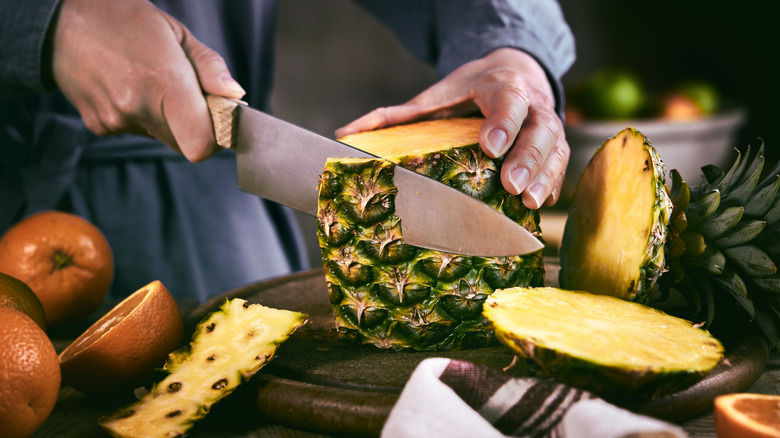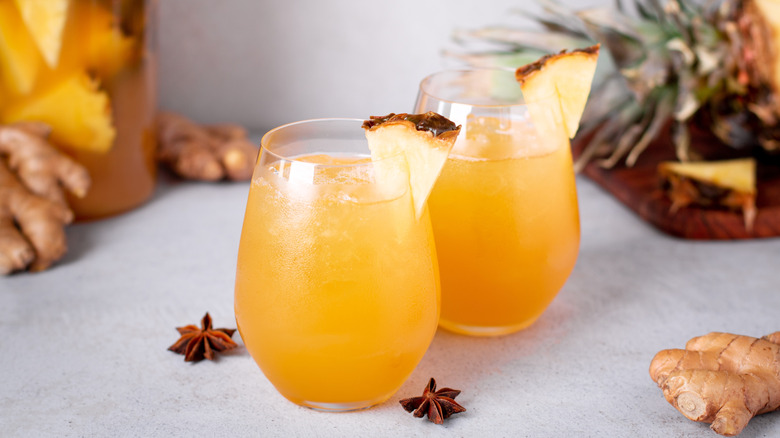Don't Throw Out Those Pineapple Rinds When You Could Make This Fermented Drink Instead
We may receive a commission on purchases made from links.
Some fruits like apples and peaches have skins so thin they don't give us any pause, but others have thick rinds that need to be removed. While they usually go right in the trash, it turns out that banana peels can be used to make tea and smoothies, while watermelon rinds can be pretty tasty if you pickle them. Even pineapple skin, the rhinoceros hide of the fruit world, can be transformed into a drink called tepache — although this wasn't always the case. According to Bryan Quoc Le, a food scientist employed by Mendocino Food Consulting, "Tepache means made of corn, so the original indigenous drink was brewed from maize." He went on to say, however, that pineapple rinds may have been added as a sweetener as early as 500 A.D., and at some point they seem to have displaced the corn entirely.
Tepache is a fermented beverage somewhat similar to kombucha, although it's easier to brew since, unlike the latter drink, it requires no esoteric or acronymic ingredients. (We're talking about the SCOBY here — or symbiotic culture of bacteria and yeast — that you need in order to start brewing your own kombucha.) Instead, all you really need are pineapple rinds, brown sugar, and water. Quoc Le, who authored a book called "150 Food Science Questions Answered," explains how these ingredients turn into tepache: "Yeast and lactic acid bacteria naturally live on the surface of the pineapple rind and rapidly ferment the brown sugar into alcohol and lactic acid." Don't get too excited about the alcohol part, though. While Quoc Le says it's possible for tepache to contain up to 5% alcohol, an ABV between 0.5% and 2% is typical. As homemade hooch goes, it's not too potent.
How to make tepache
Tepache really couldn't be much easier to make. First, dissolve half a cup of brown sugar in a quart of water, then add the rind of one peeled pineapple. Throw the core in the pot, as well. Cover the pot with a towel, then let it sit at room temperature for about 24 to 36 hours. At this point, the tepache should be somewhat foamy. If not, you might want to add a teaspoon of baker's yeast. In theory the pineapple rind itself should contain enough natural yeast to get the fermentation started, but some pineapples undergo processing that eliminates much of this substance. Once the drink is fizzy and tastes right to you, you may consider it done.
If you're not a pineapple purist, you might want some extra flavoring. Bryan Quoc Le feels that "Cinnamon and allspice give great, refreshing flavor to the tepache," while other ingredients that could be added along with the pineapple peels include black peppercorns, cloves, ginger, lemongrass, mace, or star anise. Quoc Le suggests serving tepache in a clay mug garnished with lime, but says you could also swap it out for the vodka in a Moscow Mule.

